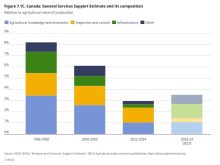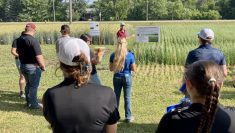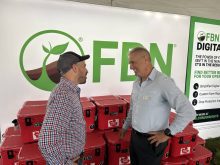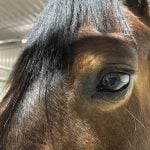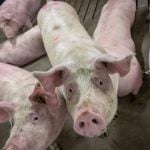As soon as urea fertilizer goes down in your field, it begins to disappear, broken down into ammonia gas by the enzyme urease and lost to the atmosphere through a process known as volatilization.
Because urease is a byproduct of the decomposition of organic matter, all soils, wherever you are in the world, contain the enzyme, said Mario Tenuta, a soil science professor at the University of Manitoba.
“Urease can cause urea to be converted to ammonia, especially under hotter conditions, and if there’s a bit of moisture in the soil,” Tenuta said.
Read Also

Still hard to predict precise fertilizer payback
Despite decades of advances, international research finds no clear answer for where and when adding nutrient will fail to boost growth.
That’s kicked off a race to develop nitrogen stabilizers known as urease inhibitors which are designed to inhibit those enzymes.
“Urease inhibitors bind to the enzyme in the soil that causes the urea fertilizer to break down into ammonia,” Tenuta said.
“When the urease enzyme approaches the urea fertilizer, it binds with the inhibitor and causes the enzyme to be non-functional. So, basically it keeps the active enzymes from attacking the urea granules to produce ammonia.”
Nitrogen stabilizers, in general, are used when the nitrogen source sits on the surface of the soil, Tenuta said.
“If a farmer sees in the forecast that it’s going to rain, he can apply fertilizer to the surface of the soil and know it’s going to be washed down into the soil,” Tenuta said. “In that case, they won’t see much loss of ammonia. But if it doesn’t rain, and the urea sits on the surface, the inhibitor protects the urea from being converted to ammonia until it is able to be washed into the soil.”
In the summer of 2020, a new product became available for farmers wanting to protect their nitrogen inputs. Koch introduced ANVOL, its latest entry in the Canadian nitrogen stabilizer market, in August 2020. It’s now touting the product after a full season in the field. Koch introduced one of the earliest and best-known nitrogen stabilizers, Agrotain, about 25 years ago.

What makes ANVOL different is the Koch-patented active ingredient, Duromide, said Rigas Karamanos, senior agrononist for Koch in Canada, who says the new product offers longer-lasting protection.
“Duromide is designed to extend nitrogen protection longer when combined with NBPT,” says Karamanos. “These two active ingredients, working in tandem, allow ANVOL to provide the longest-lasting protection against ammonia volatilization.”
Karamanos said the motivation behind developing the Duromide molecule and ANVOL, really came from two different sources. The first was feedback the company had received from distributors, retailers and growers.
“We conducted grower and retailer surveys, held focus groups, and even tapped into employees at Koch who farm, or whose families farm to get their feedback and understand where there was a gap or need in the industry,” Karamanos said. “We used this information as a guide, and we started looking at how we could optimize our current formulations to continually create value for distributors, retailers and growers across the globe.”
The second reason stems from the company philosophy at Koch that looks at its business through the lens of creative destruction.
“This means we deliberately look to replace something we offer, or is out in the industry, knowing it can be improved upon,” Karamanos said. “The development of ANVOL, from Agrotain is a great example of this principle in practice. We took a great, existing product and put it back through the R&D process and came out on the other side with ANVOL and the Duromide molecule.”
Karamanos said the numbers speak for themselves, backed up by the in-field trials the company has completed.
“Across eight site years in the U.S. urea treated with ANVOL resulted in an average corn yield increase of 31 bu./acre over untreated urea,” Karamanos said. “In volatilization trials, ANVOL reduced cumulative ammonia loss to 12 per cent, compared to losses of more than 30 per cent with untreated urea.”
In a study published earlier this year in Revista Brasileira de Ciência do Solo, a Brazilian peer-reviewed soil science journal, results showed that Duromide and NBPT, which are both found in ANVOL, reduced nitrogen losses by up to 33 per cent compared to NBPT alone.
“The results found in the peer-reviewed study aligned with our findings and results of other third-party research results,” Karamanos said.
So, what does this mean for a farmer’s bottom line? Noting that price is ultimately set at a retail level and will vary retailer to retailer, Karamanos says it’s difficult to compare the price point for ANVOL to other nitrogen stabilizers.
“We know that ANVOL allows growers to optimize their nitrogen rates and helps them capture the most value from their nitrogen fertilizer,” he said. “For example, in a study that looked at varying nitrogen rates of urea treated with ANVOL versus untreated urea, urea treated with ANVOL at a nitrogen rate of 180 lbs./ac. outperformed untreated urea at a rate of 240 lbs./ac. by 19 bu./acre. In this scenario, a grower would benefit not only from the cost savings of an optimized rate but the yield advantage as well.
But as Tenuta points out, a grower must consider their specific conditions to determine whether using any nitrogen stabilizer is worth the investment.
“There is a cost for the inhibitor, so they need to determine whether the conditions call for it,” Tenuta said. “ANVOL and Agrotain, if used according to the label, will prevent ammonia loss. It might be a few pounds per acre, where you won’t really see effects on yield. But if it was hot and windy, it could be 10 to 20 pounds and in that case, farmers might see a difference in yield.”




